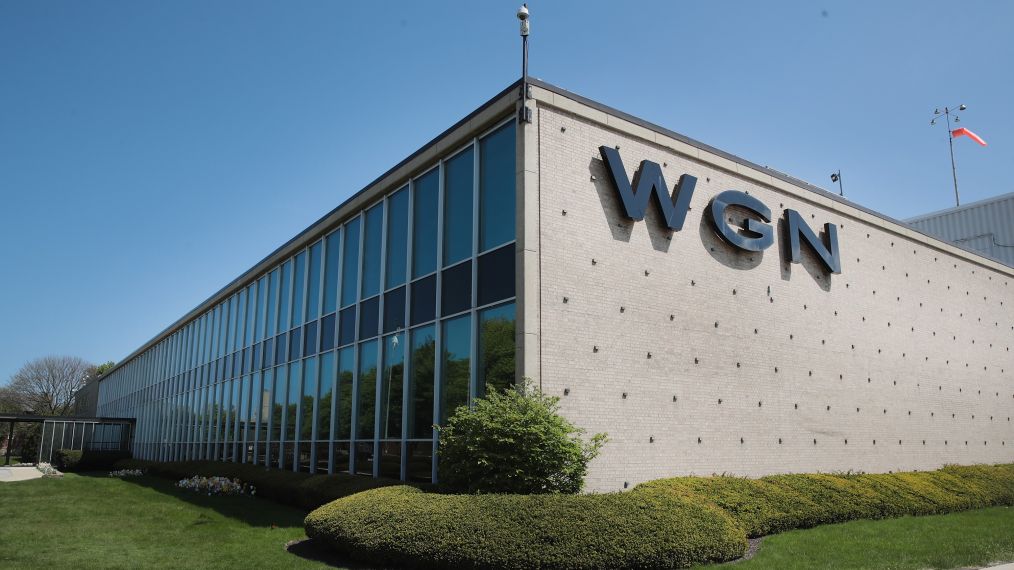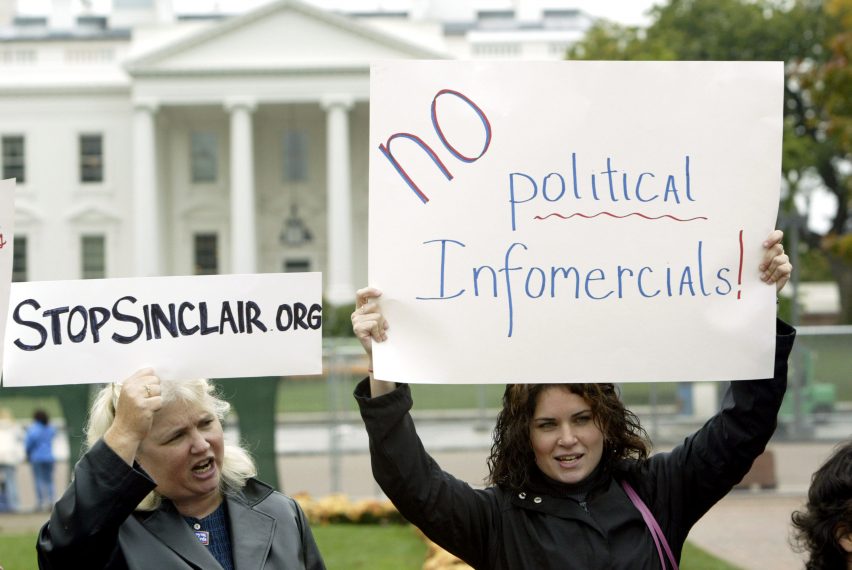What the $3.9B Sinclair Acquisition of Tribune Media Means for Viewers Like You

On May 8, Sinclair Broadcast Group announced its intention to purchase Tribune Media Company. The $3.9 billion deal will allow Sinclair, which already owns 173 local television stations across the country, to acquire Tribune’s 42 stations, WGN America, WGN Radio and a minority stake in the Food Network. The combined stations will reach upwards of 70 percent of American households.
Current FCC rules prohibit any one company from owning stations that broadcast to over 39 percent of the country. But the agency’s chairman, Ajit Pai, has recently suggested reinstating a loophole that would create a pathway for the Sinclair-Tribune acquisition.
“This is a transformational acquisition for Sinclair,” the company’s president and CEO Chris Ripley said in a statement Monday.
Even before the deal was announced, speculation about a Sinclair-Tribune acquisition had already raised concerns about the far-reaching consequences it could have for the American media landscape—in particular, the local news viewers across the country will see. In April, House Minority Leader Nacy Pelosi urged Pia not to help facilitate the deal. Sinclair’s acquisition of Tribune would be bad for consumers Pelosi insisted, because it would constitute the loss of “an independent voice in their media market.”
In a statement released on Monday, Craig Aaron, president and CEO of Free Press, an independent group that advocates for press freedom and diversity in media, called the deal, and the circumstances surrounding it, a scandal.
“They are building an old media empire,” Aaron told TV Insider. “There’s a lot of coverage of new media, but they’ve actually pieced together an immense amount of media power and a huge audience through their massive expansion in the last few years.”
There are two primary reasons for news consumers to be concerned about this merger, according to Victor Pickard, Associate Professor of Communication at the Annenberg School for Communication and author of America’s Battle for Media Democracy: The Triumph of Corporate Libertarianism and the Future of Media Reform. The first, he says, has to do with problems that stem from media concentration in general. “That is where you see more pre-packaged programming, less connection to local communities, less local programming, less local news, less diversity in content in general. This is a well known concern about the hazards of media concentration when you have fewer owners.”
Sinclair’s centralized business model will result in what Aaron calls “cookie-cutter content”—the same newscasts and commentaries airing across many different stations. “We have 30 or more years of evidence that more concentration and more consolidation is not good for the quality of local news over all,” he says. “Viewers really benefit when there are multiple stations competing, multiple reporters trying to beat each other for scoops and different angles and perspectives on what’s happening in a given community.”
“You’re less likely to have local news teams producing this news,” says Pickard. He predicts that while stations will still cover the car crashes and crimes they always have, the news will increasingly focus on national issues. “Quite simply, when the news isn’t being produced locally, it’s less likely to deal with local issues.”
That’s significant given the public’s widespread distrust of the national news media, as Media Matters president Angelo Carusone points out. Polls consistently show a distressing lack of trust in media in general. But, Carusone says, “Most of the venom and the distrust is geared toward the national media. When it comes to local media, that’s not the case. They’re still trusted.”

Pictured (L-R):Protesters Madonna Brennan of Gambrills, Maryland and Clarissa Kornell hold signs during a protest rally against Sinclair Broadcasting in Lafayette Park near the White House October 22, 2004 in Washington, DC.
According to a 2016 survey from the non-partisan Pew Research Center, 46 percent of Americans say they get their news from local television stations. Carusone worries that Sinclair’s presence in local media markets will jeopardize the relationship between information providers and their audiences, further eroding trust in the media. “Regular watchers of programming on these stations, they’re going to see the difference once Sinclair takes over right away.”
One of the biggest differences viewers may see has to do with Pickard’s second major concern with the Sinclair-Tribune deal: Sinclair’s clear ideological perspective.
The company’s conservative slant is well documented. In 2004, Sinclair stations refused to air an episode of Nightline it deemed critical of the Iraq war, and aired parts of an anti-John Kerry documentary promoted by Swift Boat Veterans. Sinclair’s stations ran anti-Obama infomercials and specials in 2010 and 2012, and last year Jared Kushner, President Donald Trump’s son-in-law and senior advisor, boasted of a deal he struck with Sinclair for favorable coverage of the Trump campaign. (Sinclair has denied Kushner’s account, while also insisting they offered the same coverage-for-access deal to the Clinton campaign.)
On Friday, the New York Times published an in-depth report on the changes at a Seattle station after it was purchased by the company, including the right-leaning segments Sinclair requires its stations to air.
“They are called ‘must-runs,’ and they arrive every day at television stations owned by the Sinclair Broadcast Group—short video segments that are centrally produced by the company. Station managers around the country are directed to work them into the broadcast over a period of 24 or 48 hours.”
One such video package aired during the 2016 campaign, according to the Times, suggested that voters should reject Hilary Clinton because the Democratic party supported slavery in the 1800s.
“You’re going to see Boris Epshteyn at a local level across all of these networks now,” Carusone says, referring to the former Trump spokesman who now serves as Sinclair’s chief political analyst and commentator.
With the Tribune deal, Sinclair may even be attempting to extend its reach beyond local news. As part of the merger, the company will acquire cable network WGN America, and Sinclair CEO Ripley has made it clear that major changes are planned for the network. The working theory is that the expanded company may be preparing to launch a Fox News competitor.
“Some people were suggesting that Sinclair will try to take on Fox in terms of their brand identity,” says Pickard.
“I will credit them for not really pretending otherwise,” says Free Press’s Craig Aaron. “At least with their national content. You don’t hear them talking about ‘fair and balanced’ too much.”








